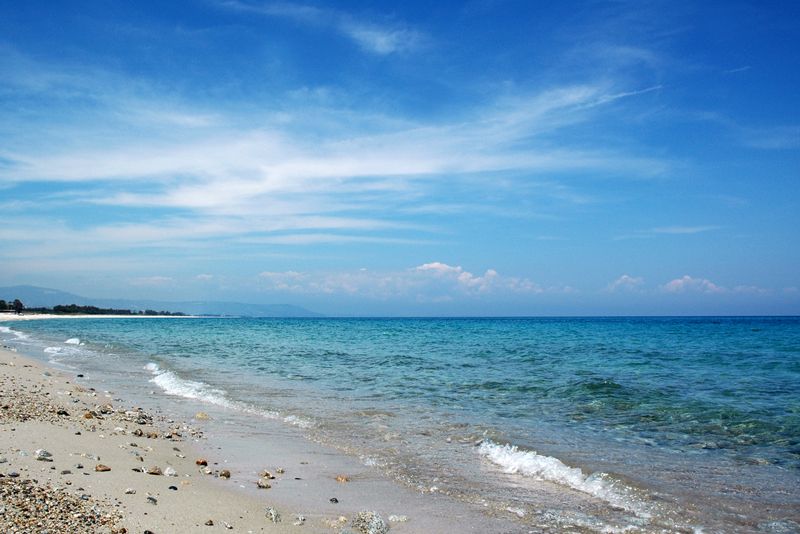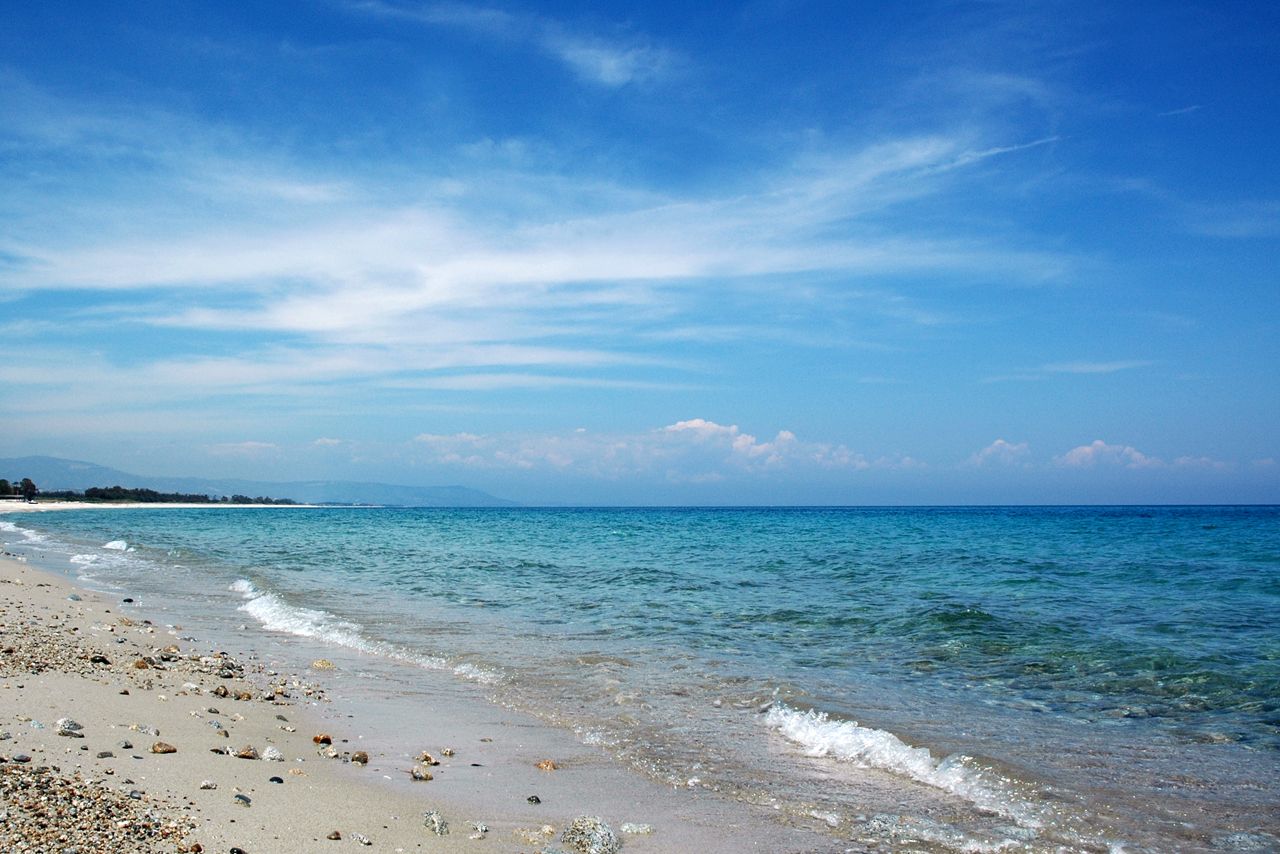
The territory
What to visit in Calabria
A holiday at Villaggio Santandrea is an opportunity to discover Calabria on the Ionian coast, a territory of ancient history that offers itineraries between archaeological sites of Magna Graecia, Byzantine and medieval abbeys and parks with luxuriant and uncontaminated nature.
For 15 kilometres, from the Santandrea Village to beyond Soverato, there is only a splendid sandy beach, while a little further north, in Copanello di Stalettì and Caminia di Stalettì, cliffs and coves of absolute beauty enchant visitors.
We have selected for you some of the most beautiful Calabrian locations, which can be reached in a short time from the Santandrea Resort.
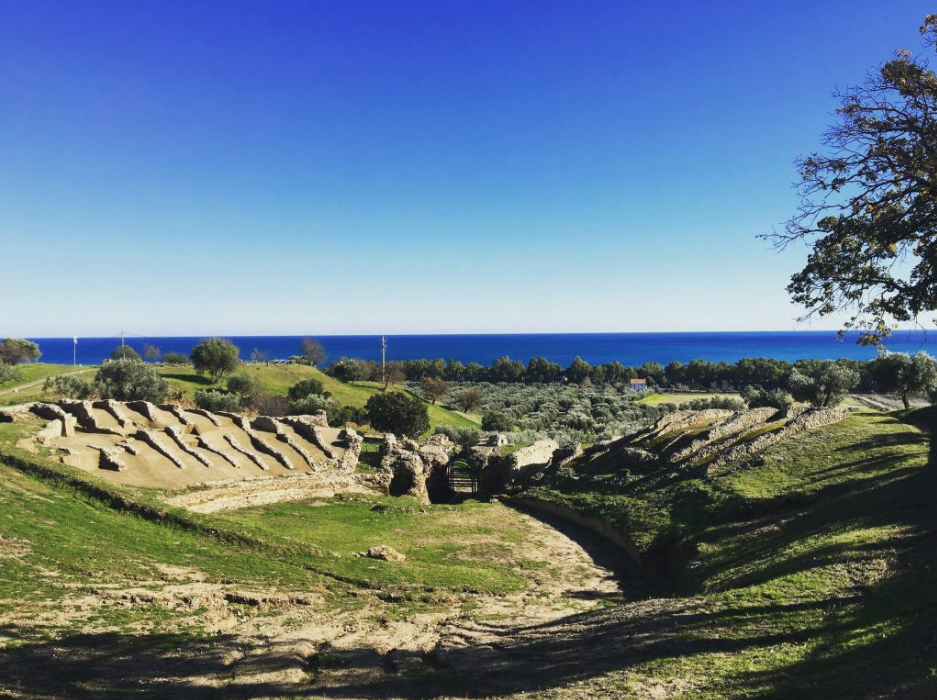
Scolacium Archaeological Park
35 kilometers north of the Santandrea Village, the Scolacium Archaeological Park, the Skylletion of Magna Grecia (in the locality of Roccelletta di Borgia), bears witness to the presence in Calabria first of the Greeks and then of the Romans. Squillace, the city that gave birth to Cassiodoro, preserves the imposing ruins of the Forum, the Basilica, the Baths and the Theater.
Little known is the Greek settlement. Legend has it that it was Menestheus, king of Athens, who was the ecist of Skylletion; in reality the foundation dates back to the VI-V century BC. by Greek colonists from Athens or Crotone.
The chosen site, located along the route of the isthmus, on the Ionian coast and guarding the Gulf of Squillace, was strategic for the control of land and river routes and for trade with the entire Mediterranean basin.
The Roman colony of Scolacium, with its imposing remains, is the protagonist of the visit itinerary and represents a unicum in the Calabrian archaeological panorama. Deduced in 123-122 BC, it was affected by interventions of arrangement of the urban part and of the entire territory through the division of cultivable parcels (centuriation).
It prospered until its re-foundation by the emperor Nerva, when it assumed the name of Colonia Minervia Nervia Augusta Scolacium and was further monumentalised. Today it is possible to visit the Forum, with its unique brick paving that has no equal in the entire Roman world and the remains of some buildings, including the Curia, the Cesareum and the Capitolium. Not far from the square is the 3,500-seat theater, set, in the Greek manner, on a natural hill and the remains of the only Roman amphitheater in Calabria.
The city also had thermal baths, two aqueducts, fountains and a necropolis. The life of the colony ended around the VII-VIII century AD. C., when the population moved, first to the heights of the theater and then up to today's Squillace, due to swamping phenomena that made the area inhospitable. The Park conserves architectural remains which bear witness to the presence of the site until the 12th century: the imposing Norman basilica, which welcomes and amazes visitors and which suggests the importance of the place, a crucial node for communication routes and for relations with the territory, even in medieval times. Inside the Park is the Museum where the results of the excavation campaigns are exhibited with an exhibition that traces the history of the city through finds that document ancient life in every respect. The museum preserves an important cycle of Roman statuary and portraiture.
Finally, we point out an extraordinary artifact: the colossal forearm in bronze. The visit concludes with an interesting itinerary of industrial archeology: in fact, the oil mill, built in 1934 by the Mazza family, is still intact.
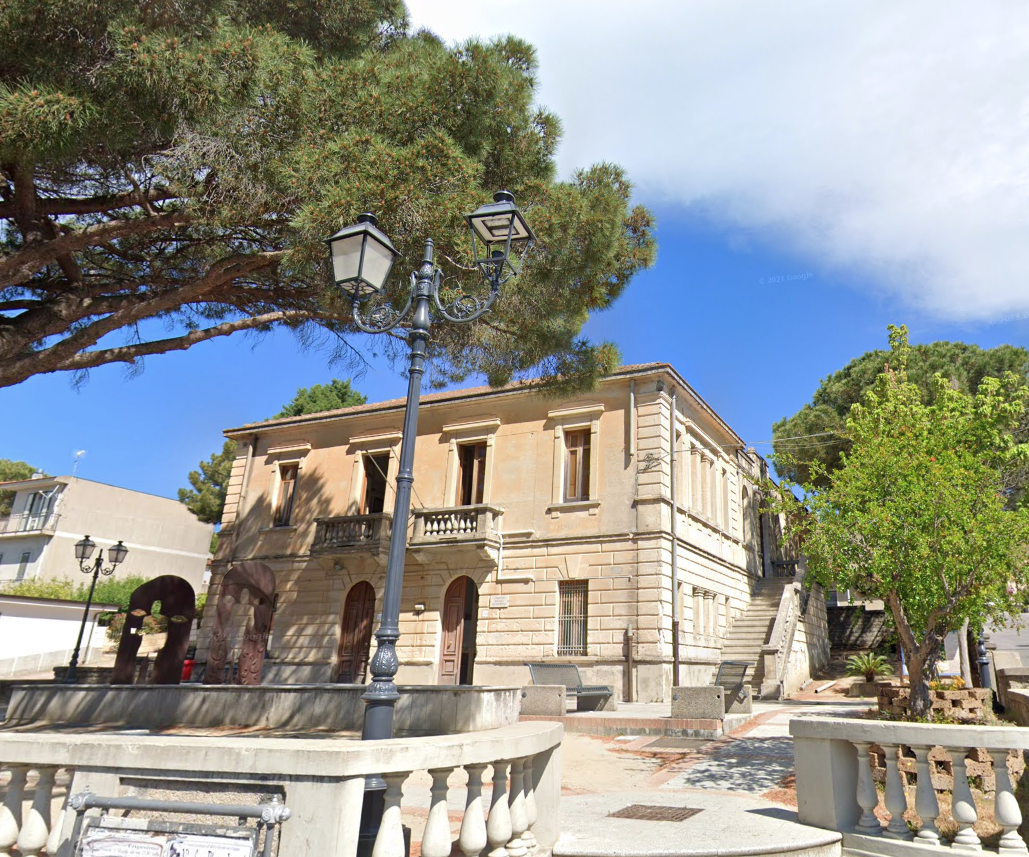
Village of Riace
The village of Riace, famous for the discovery of the Riace Bronzes, preserved in the National Museum of Magna Grecia in Reggio Calabria, with the characteristic historic centre.
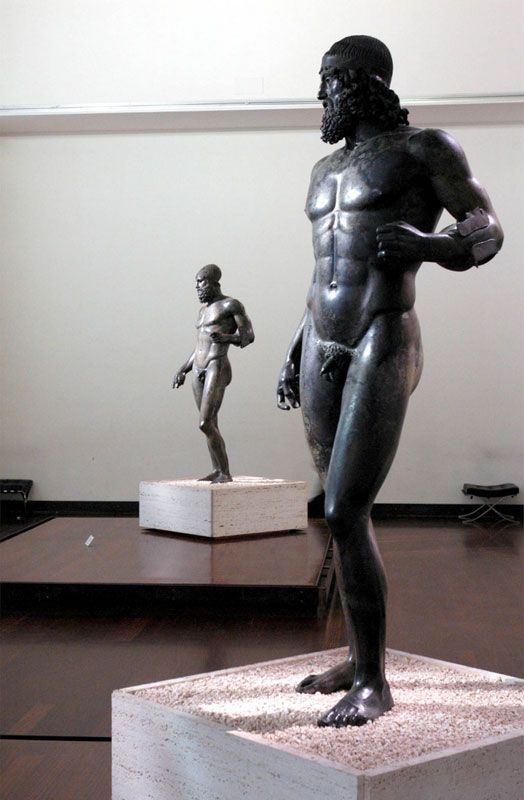
Riace's bronzes
The Riace Bronzes are two bronze statues of Greek origin datable to 460 and 430 BC respectively and received in an exceptional state of conservation.
The two statues - found on 16 August 1972 near Riace marina, are considered among the most significant sculptural masterpieces of Greek art, and among the direct testimonies of the great master sculptors of the classical age.
The hypotheses on the origin and authors of the statues are different, but there are still no elements that allow the works to be attributed with certainty to a specific sculptor.
The Bronzes are in the National Museum of Magna Graecia the place where they were brought back in December 2013, after being removed and left for three years (with related restoration works) at Palazzo Campanella, seat of the Calabria regional council due to the works renovation of the same museum. The Riace Bronzes have become one of the symbols of the village itself and of the city of Reggio Calabria.
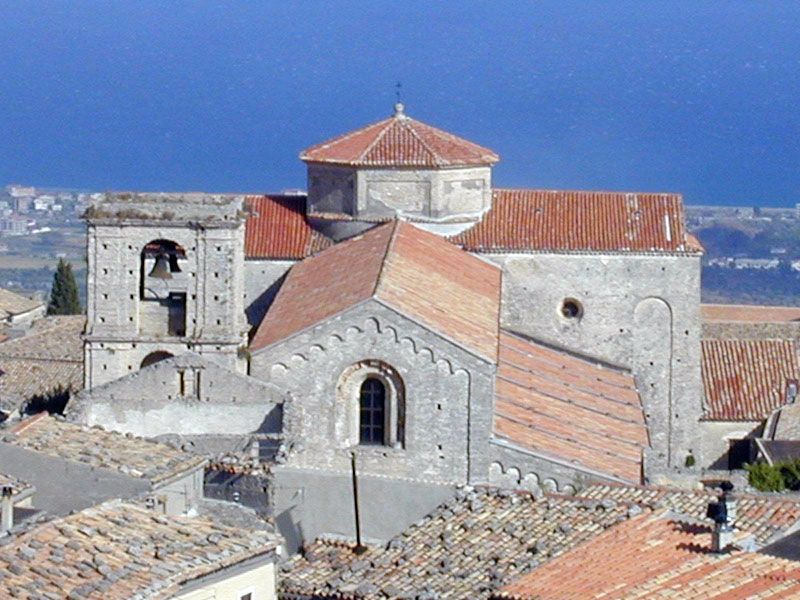
Gerace
70 kilometers from the Santandrea Village, Gerace is one of the most beautiful villages in Calabria: between medieval alleys and suggestive churches you arrive at the castle which dominates an extraordinary landscape.
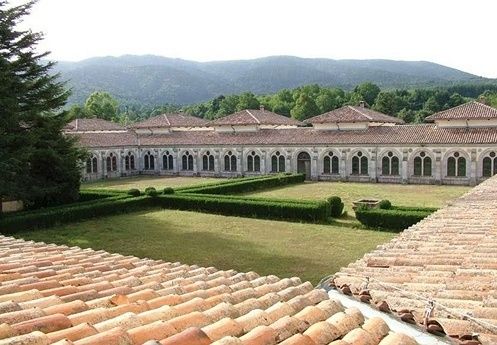
Charterhouse of Serra San Bruno
Not far from the Santandrea tourist village, Calabria offers one of the most evocative naturalistic scenarios that frame a place equally full of charm: the Certosa di Serra San Bruno.
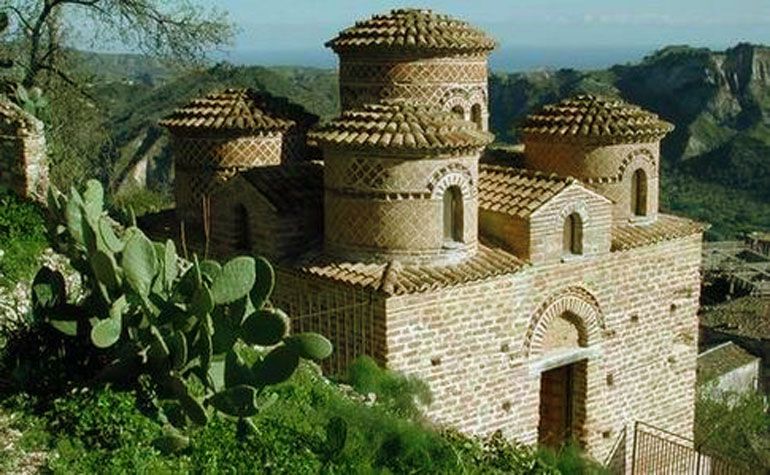
Catholic of Stilo
40 kilometers south of the Santandrea Village you can admire: the Cattolica di Stilo, a small 9th century church, a jewel of Byzantine architecture, in a panoramic position in the village of Stilo.
Little known is the Greek settlement. Legend has it that it was Menestheus, king of Athens, who was the ecist of Skylletion; in reality the foundation dates back to the VI-V century BC. by Greek colonists from Athens or Crotone.
The chosen site, located along the route of the isthmus, on the Ionian coast and guarding the Gulf of Squillace, was strategic for the control of land and river routes and for trade with the entire Mediterranean basin.
The Roman colony of Scolacium, with its imposing remains, is the protagonist of the visit itinerary and represents a unicum in the Calabrian archaeological panorama. Deduced in 123-122 BC, it was affected by interventions of arrangement of the urban part and of the entire territory through the division of cultivable parcels (centuriation).
It prospered until its re-foundation by the emperor Nerva, when it assumed the name of Colonia Minervia Nervia Augusta Scolacium and was further monumentalised. Today it is possible to visit the Forum, with its unique brick paving that has no equal in the entire Roman world and the remains of some buildings, including the Curia, the Cesareum and the Capitolium. Not far from the square is the 3,500-seat theater, set, in the Greek manner, on a natural hill and the remains of the only Roman amphitheater in Calabria.
The city also had thermal baths, two aqueducts, fountains and a necropolis. The life of the colony ended around the VII-VIII century AD. C., when the population moved, first to the heights of the theater and then up to today's Squillace, due to swamping phenomena that made the area inhospitable. The Park conserves architectural remains which bear witness to the presence of the site until the 12th century: the imposing Norman basilica, which welcomes and amazes visitors and which suggests the importance of the place, a crucial node for communication routes and for relations with the territory, even in medieval times. Inside the Park is the Museum where the results of the excavation campaigns are exhibited with an exhibition that traces the history of the city through finds that document ancient life in every respect. The museum preserves an important cycle of Roman statuary and portraiture.
Finally, we point out an extraordinary artifact: the colossal forearm in bronze. The visit concludes with an interesting itinerary of industrial archeology: in fact, the oil mill, built in 1934 by the Mazza family, is still intact.
Discover Calabria, book now
Fill out the request form or book directly from our management system and
you will get the most advantageous offer for your holiday in Calabria.

The Resort
Tourist Village directly on the sea, in Calabria in the locality of Sant'Andrea Apostolo dello Ionio, inserted in the heart of a very green park of olive trees, mimosas and oleanders, the structure is located in one of the most suggestive areas from a naturalistic point of view and a stone's throw from one of the most beautiful beaches in Italy.
The Santandrea village is also the right location where you can organize important banquets, and the staff is available to accommodate the needs for the organization of events such as meetings and conferences.
C.I.R. Codice Regionale 079118-RTA-00001
Info sito
Contact
VILLAGGIO SANTANDREA
C.da Taverna snc
88060 Sant'Andrea Apostolo
dello Jonio - Catanzaro - Italia
Tel.+39.0967.45039
Tel.+39.0967.45538
Mobile +39.334.8328630
Mobile +39.351.5286670
CATANZARO OFFICES
Tel. +39.0961.770038
©Villaggio SANTANDREA - Sant'Andrea Apostolo dello Jonio
